Twitter's reputation as a bustling social media platform is not just about the number of users but the quality of engagement it offers. Unlike other platforms, Twitter boasts a niche, highly engaged user base. These users are not just scrolling passively but actively engaging, discussing, and influencing. This level of engagement makes Twitter an attractive but competitive space for advertisers, contributing to the higher cost of ads.
How to Increase Your Reach and Impressions with Low-Cost Twitter X Ads Strategies
Heads up!
Please check out the blog post below, written by our co-founder, Kevin O. Frank. Make sure not to miss it! Open it in a new tab adn read it after this blog post. You will need it .

The Intricacies of Twitter's Ad Model

At the heart of Twitter's advertising model lies its competitive bidding system. Operating on an auction-based model, advertisers bid for ad space, driving up prices in this competitive market, especially during high-demand periods like significant events or holidays, where the cost per engagement can surge by up to 20%.
Additionally, Twitter's advanced targeting capabilities allow for reaching specific audiences with precision. While effective, this targeted approach often comes at a premium, contributing to the higher costs associated with advertising on the platform.
Quality Over Quantity: The Engagement Factor
Statistics reveal that Twitter ads often yield higher engagement rates than other social platforms, with reports suggesting an average engagement rate of about 1.9%, surpassing Facebook's 0.9%. This enhanced engagement is partly due to Twitter's algorithm prioritizing ad visibility to more relevant audiences.
As a result, despite being pricier, the return on investment for Twitter ads can be significantly more substantial. This combination of focused reach and superior user interaction justifies the higher costs, making advertisers more willing to invest for better results.
Navigating Market Dynamics
When comparing ad costs across platforms, it's essential to understand the unique market dynamics of each. Twitter's average CPM (cost per thousand impressions) is around $6.46, higher than Facebook’s average of $5.12, reflecting Twitter's more active yet smaller user base.
This focused user base and the platform's emphasis on real-time engagement create a different market environment. High demand for ad space within this limited yet highly engaged audience drives prices up, illustrating the classic principle of supply and demand in digital advertising.
Twitter’s Unique Features: Real-Time Marketing and Innovative Ad Formats

Twitter's real-time nature positions it as an ideal platform for timely and relevant advertisements, aligning well with dynamic marketing strategies. This immediacy, combined with Twitter's array of innovative ad formats like Promoted Tweets, Trends, and Moments, enhances its ability to capture audience attention.
However, these unique and practical formats, tailored to the platform's live nature, contribute to the higher investment required for advertising on Twitter. Their specialized nature and the premium on real-time engagement are critical factors in the overall cost structure of Twitter’s advertising options.
Evaluating the ROI: Case Studies and Analysis
Despite the higher costs, many businesses have succeeded with Twitter ads. Presenting case studies shows that a well-crafted Twitter campaign can yield a high return on investment. A detailed cost-benefit analysis shows that the value derived from targeted reach and engagement can outweigh the initial investment.
Once, a small, family-owned bakery named "Sweet Treats" was in the heart of a bustling city. Renowned for their artisanal bread and cozy ambiance, the owners expanded their reach using social media advertising, choosing Twitter for its wide-reaching impact.
They crafted an engaging campaign, showcasing mouth-watering images of freshly baked bread and heartwarming videos of their baking process. Enthusiastically, they invested a significant portion of their modest marketing budget into Twitter ads, hoping to attract new customers.
However, as days turned into weeks, the owners noticed that their budget was rapidly depleting, but the expected customer surge hadn't yet materialized. The high costs of bidding for ad space, especially during peak hours, meant their limited funds were quickly exhausted. The owners faced an uphill battle against larger companies with far more resources to dominate the ad space.
Faced with this challenge, "Sweet Treats" had to make a tough decision. Despite the high-quality content and their heartfelt efforts, they needed help to sustain the financial strain of competing in Twitter's costly advertising environment. Reluctantly, they withdrew from the Twitter ad space, redirecting their focus to more affordable marketing avenues.
This experience taught the "Sweet Treats" owners a valuable lesson about the realities of social media advertising. It highlighted the need for small businesses to carefully evaluate and choose platforms that align with their marketing goals and budgetary constraints.
Advanced Targeting for Reduced Twitter Ad Costs: Harnessing Exported Twitter Data

This is my trick to cut the cost of Twitter Ads and conduct successful Twitter campaigns with limited budgets.
1. The Evolution to Hyper-Personalization
- From Broad to Specific: Traditional marketing strategies cast a wide net, but today's focus is on tailoring ads to individual interests and needs, ensuring higher relevance and engagement.
- Advantages: Hyper-personalized campaigns lead to increased engagement, higher ROI, and a more favorable perception of the brand.
2. The Richness of Extracted Twitter Data
- Insightful Data: Exported data from Twitter, including user locations, interests, and engagement history, offers valuable insights for marketers.
- Segmentation Strategy: Use this data to divide your audience into niche segments, enabling more precise targeting.
3. Implementing Exported Twitter Account IDs
- Direct Targeting: Upload these IDs into Twitter’s Ads Manager to specifically target or exclude groups, allowing for more focused campaigns.
- Customized Ads: Create ads that resonate with specific user groups, utilizing insights like geographical preferences or interests.
4. Boosting Conversion Rates with Precision
- Focused Targeting: Narrow your audience to minimize ad spend wastage and enhance conversion probabilities.
- Adaptive Strategy: Continuously monitor and adjust your campaigns based on performance data.
5. SEO Benefits in Twitter Advertising
- Keyword Optimization: Utilize common keywords extracted from user data in your ad content for improved SEO.
- Strategic Linking: Incorporate credible links in your ads to boost SEO and build user trust.
6. Overcoming Data Challenges
- Data Management: Use appropriate analytical tools to navigate the vast amount of data efficiently.
- Adapting to Algorithm Changes: Keep abreast of Twitter’s algorithm updates to maintain the effectiveness of your strategies.
Utilizing Exported Twitter Follower Data for Enhanced Engagement
- A New Era in Advertising: Shift from broad, imprecise advertising methods to using exported Twitter data for pinpoint targeting, illuminating your ideal customer base.
- Maximizing Ad Spend: By leveraging this data, ensure that your ad budget is more likely to yield valuable leads and conversions, optimizing both reach and expenditure.
How can I export Twitter follower data?
In this chapter, we'll dive into how I successfully export my Twitter followers using Circleboom, a tool that transforms raw data into a goldmine of insights.
This process isn't just about collecting names and numbers; it's about unlocking the hidden potential of your audience. By the end of this chapter, you'll have a clear roadmap for harnessing the power of Twitter follower data, setting the stage for more personalized, impactful, and efficient marketing campaigns. So, let's embark on this journey to demystify the process and unveil the secrets of data-driven Twitter marketing.
Let's discover how to export Twitter followers into Excel and CSV with Circleboom. You should follow these steps:
Step #1: Log in to your Circleboom Twitter account.
If you don't already have a Circleboom Twitter account, click "Create an Account" to get started.
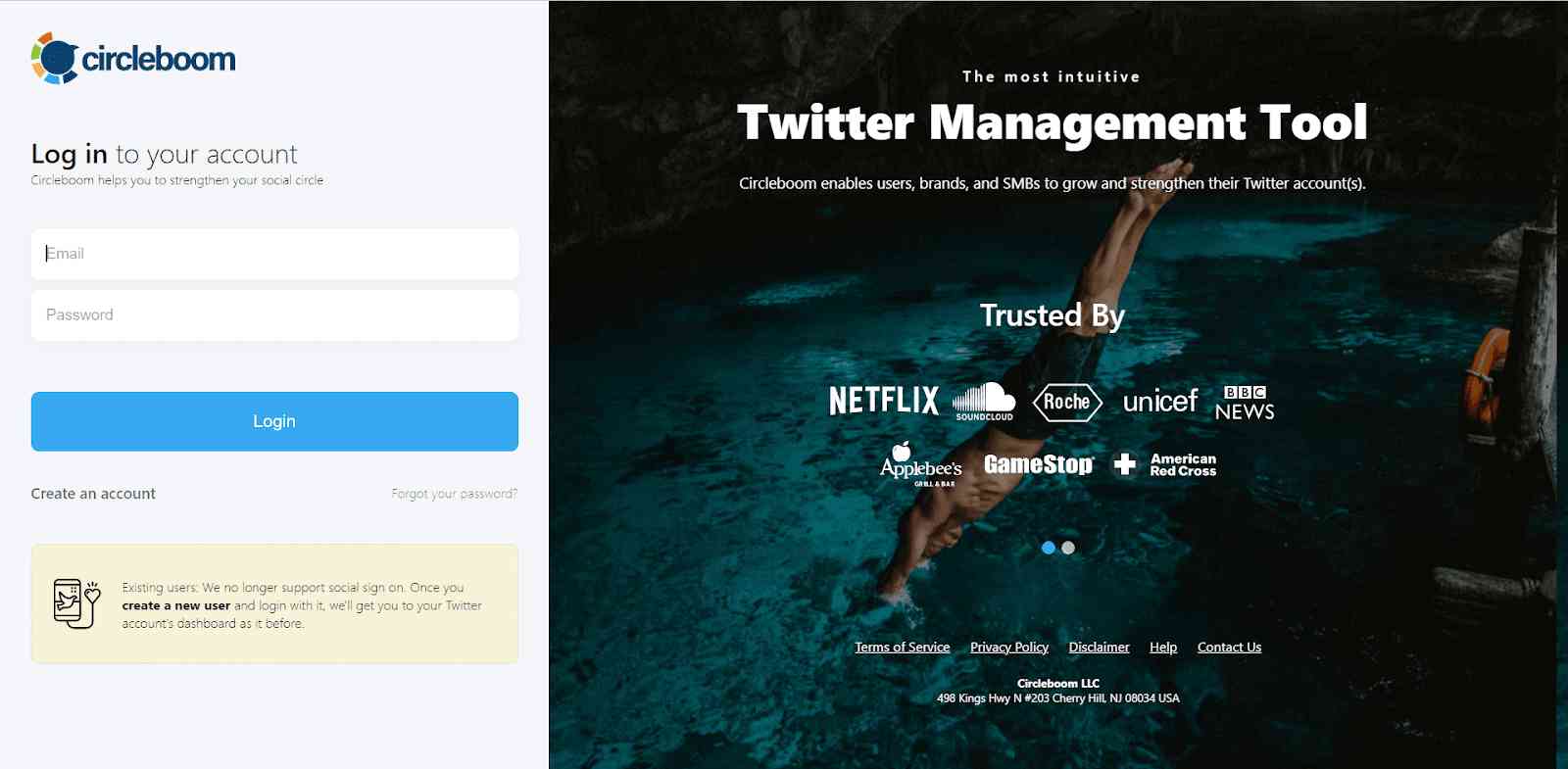
Step #2: Navigate to the left menu and find the "Search" tab.
Here you will find the "All My Followers" option.
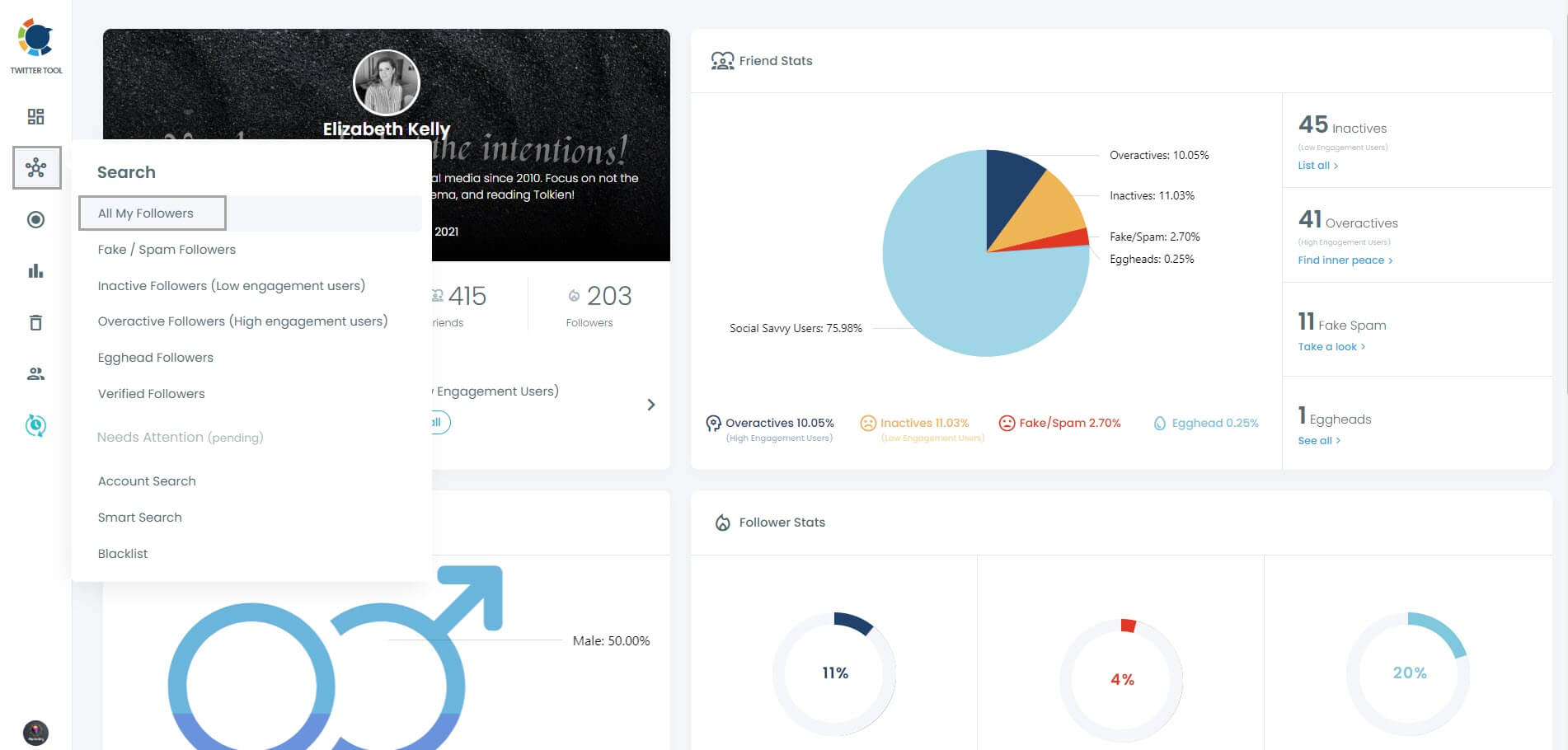
Step #3: After you click on it, Circleboom will list all your Twitter followers.
Click on the "Export" button at the top right to download your followers' list!
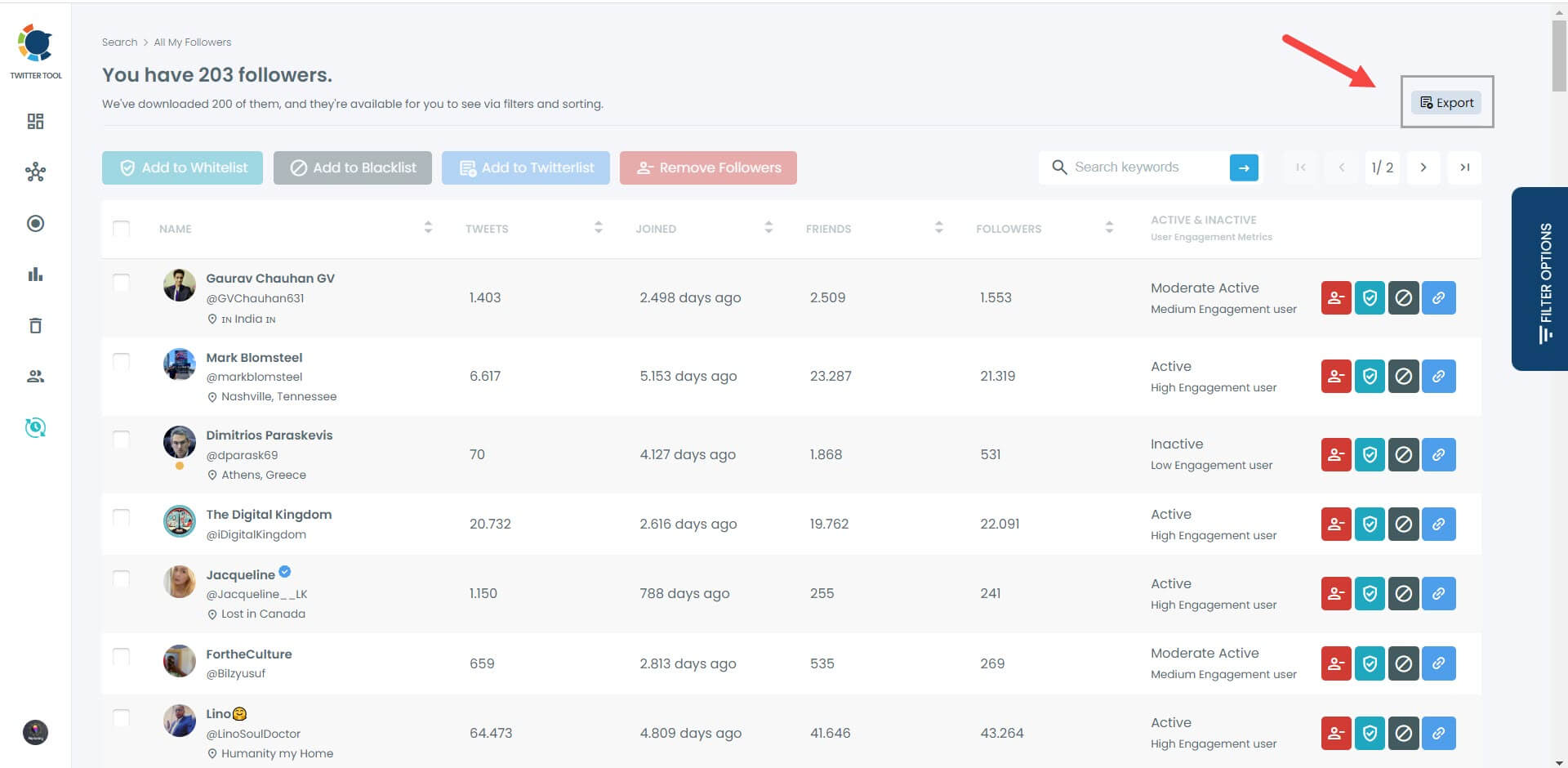
If you want to search for a specific account, you can use the keyword search bar.
Also, you can use "filter options" to narrow down your list. You can view your inactive, overactive, spammy, egghead friends. Plus, you can get a list of verified friends if you want.
Moreover, you can filter your followers by their following & follower numbers. In addition to this, you can filter them by their Twitter join date.
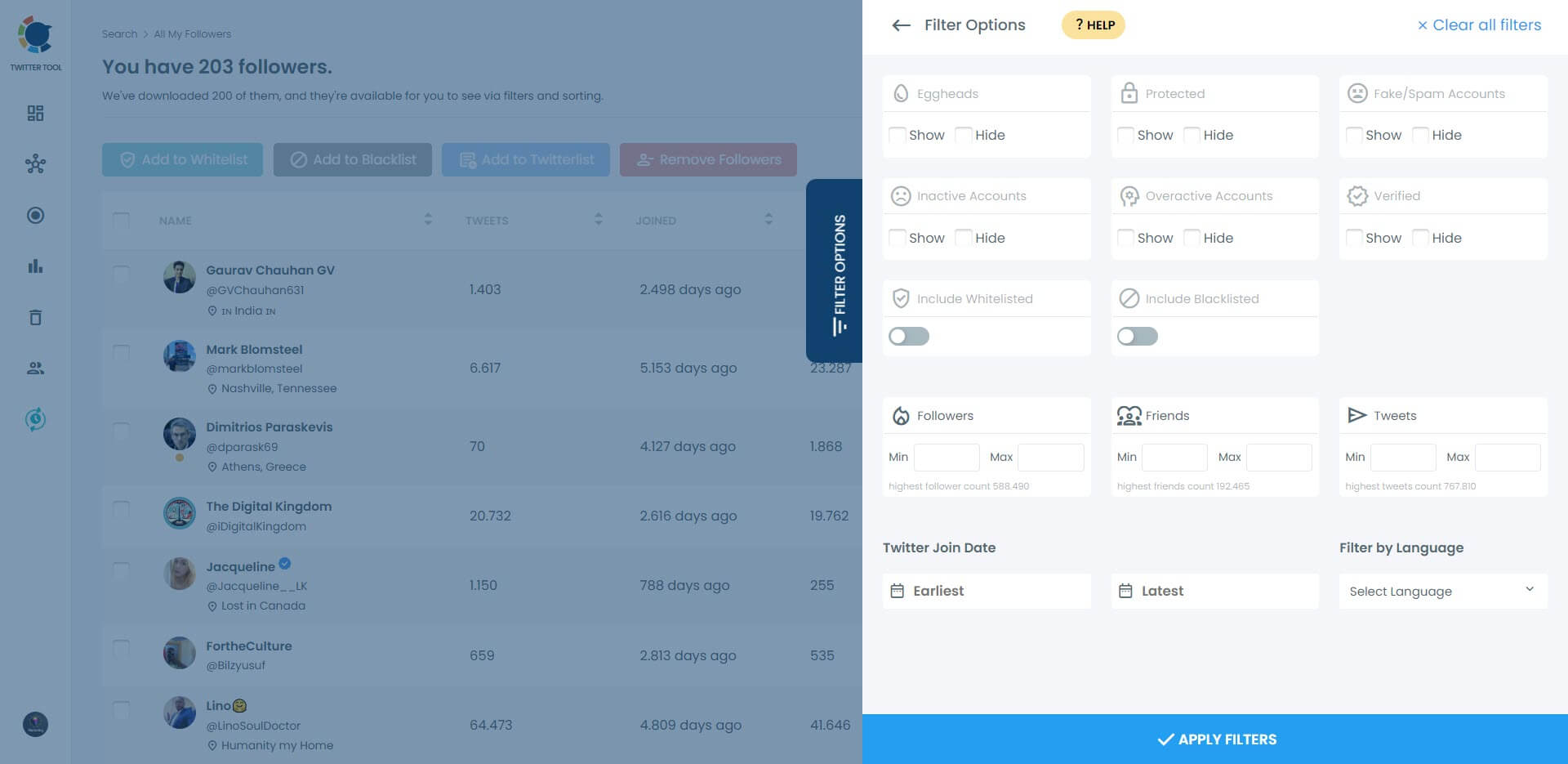
Step #4: Once you click on the "Export" button, you will view all your Twitter followers.
On your followers' list, you will have their ID numbers, followers & friends count, locations, tweet numbers, Twitter list numbers, verification status, join dates, etc.
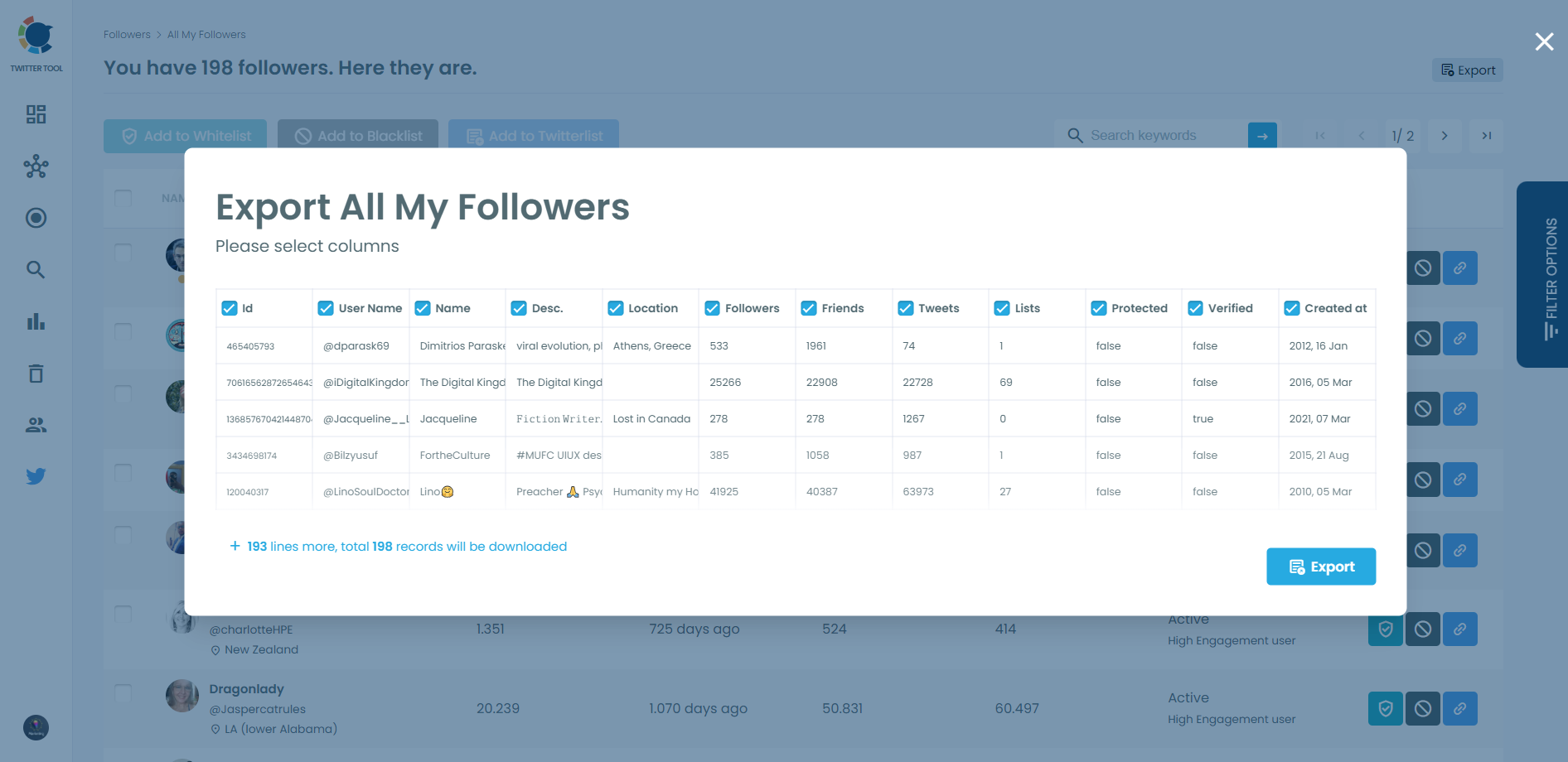
Again click on the blue "Export" button, and download your Twitter followers into a CSV file.
You can also search, find, and export followers of other Twitter profiles with Circleboom:
Step #1: Find the "Search" tool on the left-hand menu and navigate over it.
From the dropdown menu select "Account Search."
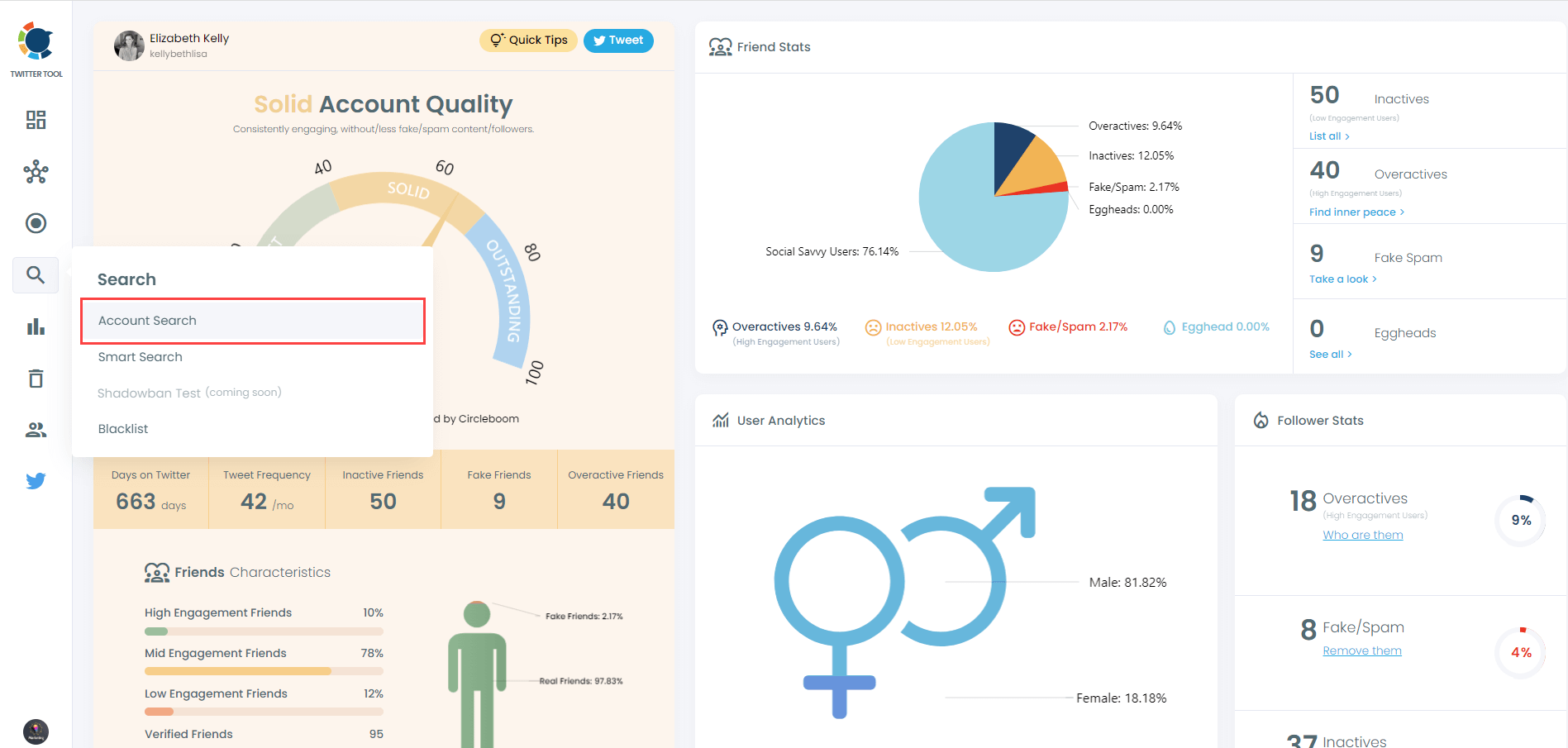
Step #2: If you want to search for someone's Twitter followers, click the "Display Followers" option. Or, you can select "Display Friends" to search for who someone follows on Twitter.
Then, you need to type the Twitter account's username in the search bar.
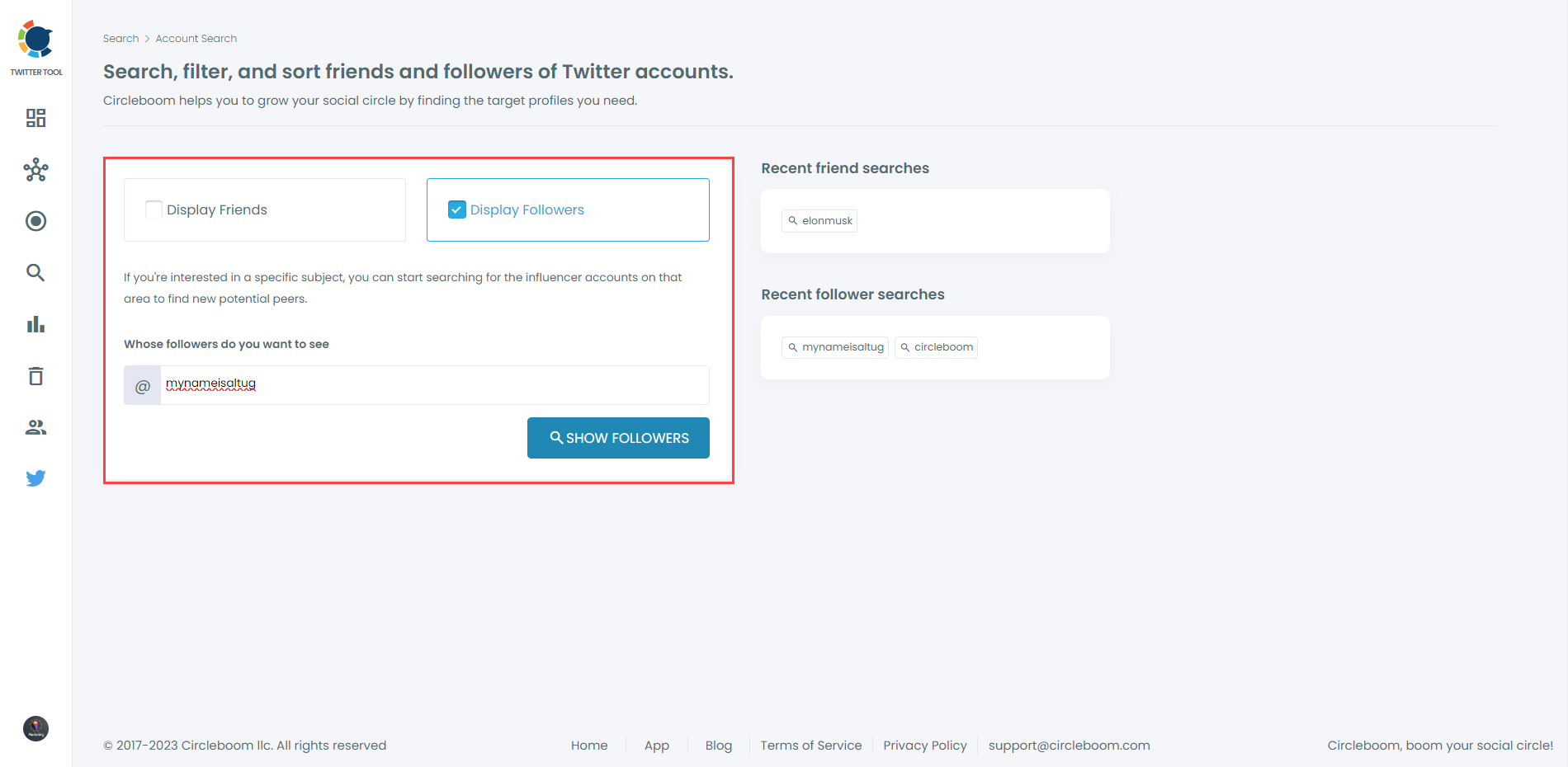
Step #3: A follower list of targeted Twitter profiles will be listed.
You can check these accounts. and if you wish you can add them to Twitter Lists.

You can also export the follower and friends list of other Twitter accounts.
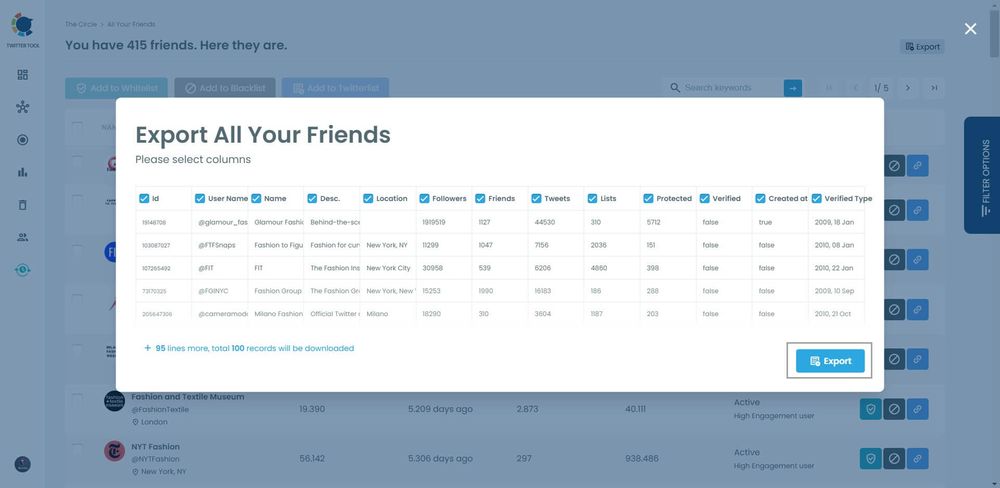
Now I can target a more focused group that shares related interests for my Twitter campaigns.
Conclusion: A Strategic Approach to Twitter Advertising
Understanding the cost structure of Twitter ads is critical to leveraging them effectively. These costs, reflective of the platform's unique value in the digital marketing landscape, can be high. Still, they also present significant opportunities due to Twitter's targeted reach and high engagement rates.
By recognizing these aspects, marketers and businesses, even small ones like 'Sweet Treats,' can strategically utilize Twitter’s advertising capabilities for maximum impact, provided they manage their budget carefully. Acknowledging challenges and opportunities is essential in making the most of what Twitter offers in digital advertising.
You can cut the cost of Twitter Ads by hyper-personalizing your target audience for your Ads. The best method for it is to export Twitter data of targeted people and only aim at those! I did it with Circleboom and it really helped in my campaigns!






